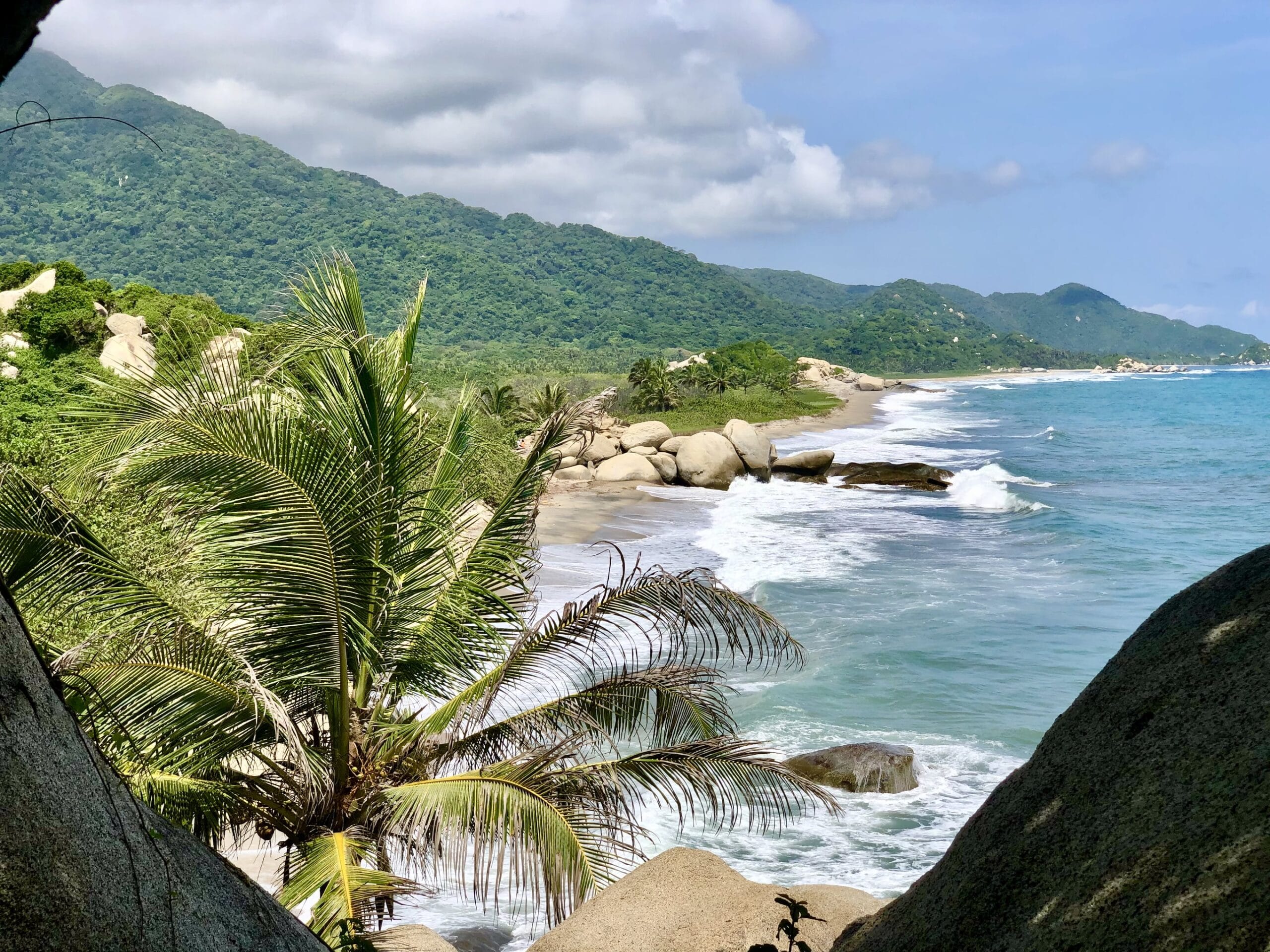If you’re traveling in Colombia’s northern Caribbean region, there’s one place you absolutely shouldn’t miss: the world-renowned Tayrona National Park. This approximately 150 km2 (58-square-mile) area, located east of Santa Marta, attracts travelers with its spectacular hiking trails and pristine beaches. If you’ve ever stumbled upon photos of paradisiacal sandy beaches with swaying palm trees from Colombia, chances are they were captured in Tayrona National Park. In this article, we’ll share our experience of getting there and what we discovered during our visit.
First, I should come clean: we didn’t exactly follow the traditional playbook for visiting Tayrona. Most travel guides insist you should spend at least two days there, camp overnight in the park, and thoroughly explore the entire area. While this sounds perfectly idyllic, we ran into several obstacles. First, we were pressed for time, and staying overnight would have meant dedicating three to four days when factoring in travel logistics. Second, accommodation options were limited during our visit, and we weren’t quite ready to embrace the “authentic Tayrona experience” of sleeping in hammocks under a communal roof with dozens of strangers. The third hurdle blindsided us: we were both recovering from an unwelcome bout of food poisoning. While I had mostly bounced back, Peter endured a nightmarish evening just before our park visit.
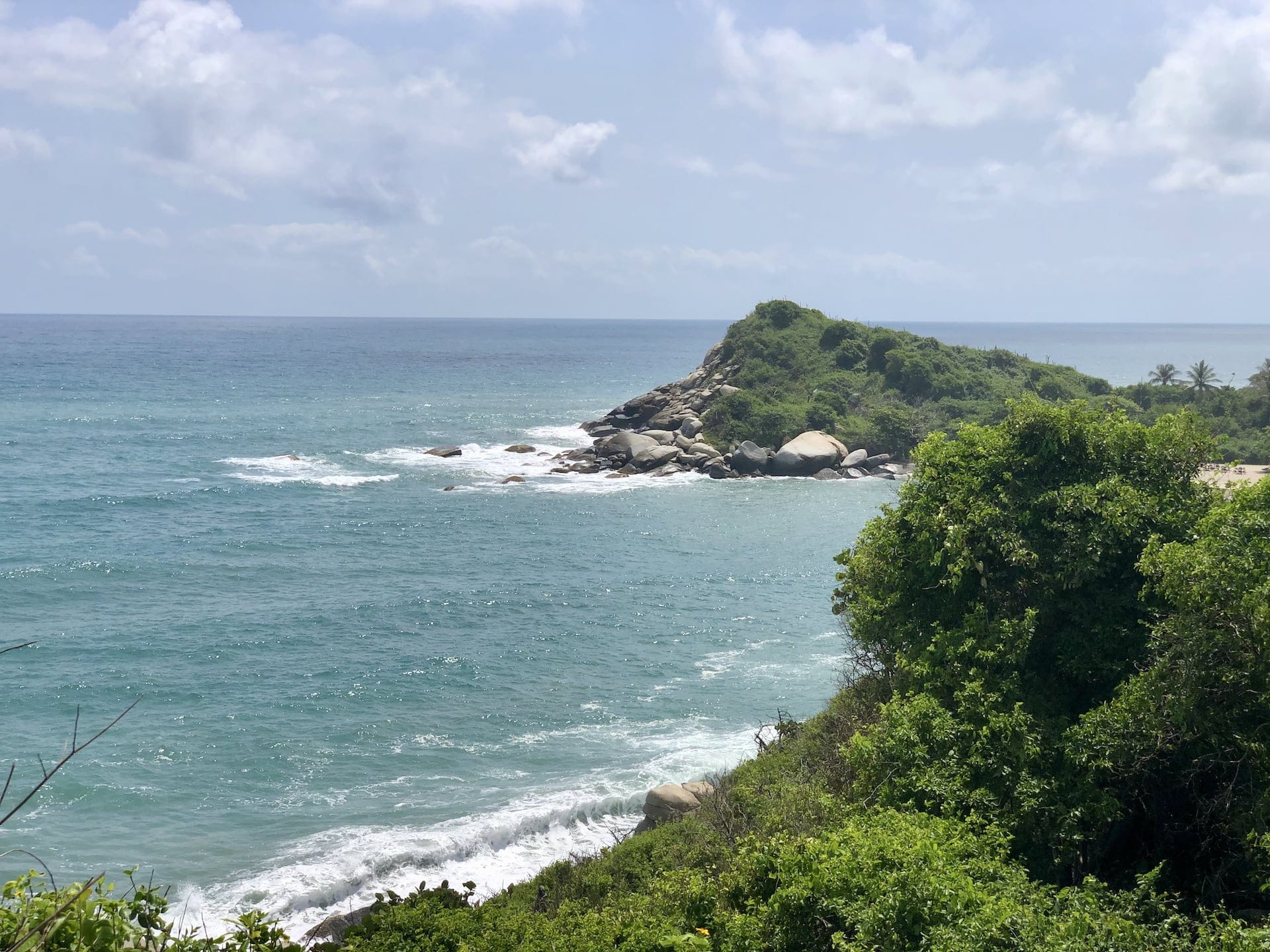
How to Get to Tayrona National Park: Transportation Guide & Costs
We arrived from Minca using the most comfortable option: a taxi. You can easily arrange one through your hotel or hostel in Minca, or simply walk to the bridge where buses stop – you’ll likely find eager drivers offering their services. Expect to pay around 150,000 COP ($38 USD). A more budget-friendly alternative is taking the bus and colectivo (local shared minibus) – though keep in mind this requires more time and patience. A taxi will get you to the park entrance in under an hour, while the colectivo route requires first returning to Santa Marta, then catching a bus to Tayrona. While this combined journey costs only about 25,000 COP ($6.3 USD), it takes at least triple the time of a direct taxi.
When using public transportation in Colombia, don’t expect traditional bus stops. You’ll need to tell the driver where you want to get off. Don’t worry though – you won’t be the only ones heading to the national park, and drivers are well-versed with tourist destinations.
The same process works for return trips (or continuing to Palomino): simply wave down a bus heading in your direction at the park entrance, confirm it’s going where you need, and hop aboard. (When taking the bus, be prepared for frequent stops as locals get on and off – don’t trust Google Maps’ driving times.) We opted for another taxi back to Santa Marta, pre-arranging the price and pickup time with our previous driver, which made the whole journey incredibly convenient.
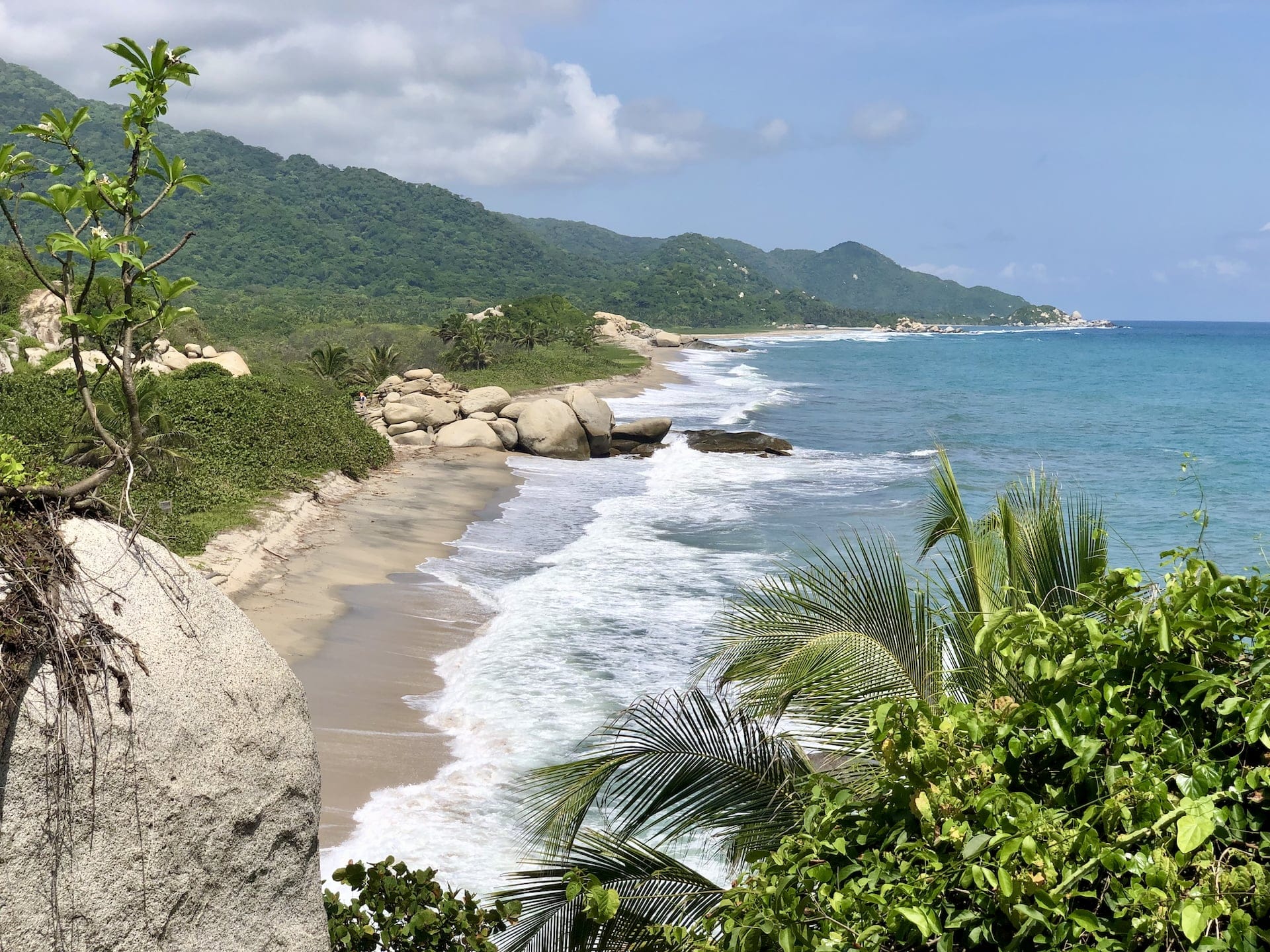
I almost forgot to mention the third option: speed boats. These depart from Taganga (Santa Marta’s “suburb”) around 9:30 AM, dropping passengers at Cabo San Juan beach inside the park, then returning in the afternoon. The boat journey takes 45-60 minutes, and while we considered this option, we read quite a few reviews suggesting it’s not exactly a pleasant cruise, plus it’s rather expensive, so we passed.
Where to Stay When Visiting Tayrona National Park: Accommodation Options & Prices
This is the million-peso question when planning your Tayrona visit. Inside or outside the park? How many nights? What type of accommodation?
You’ll find countless recommendations suggesting at least one, preferably two nights within the park. If time permits, I’d generally agree, since the park can get quite crowded during the day (even in off-season). Staying inside means you can enjoy the natural beauty before and after the daily crowds, with significantly fewer people around, as you’re not bound by entrance and exit times.
During our visit, accommodation options seemed more limited than they are now, with most choices being the aforementioned hammocks under shared roofs, plus a few more comfortable but pricier alternatives. The hammocks at Cabo San Juan can be booked via WhatsApp using this number: +57 311 2589907.
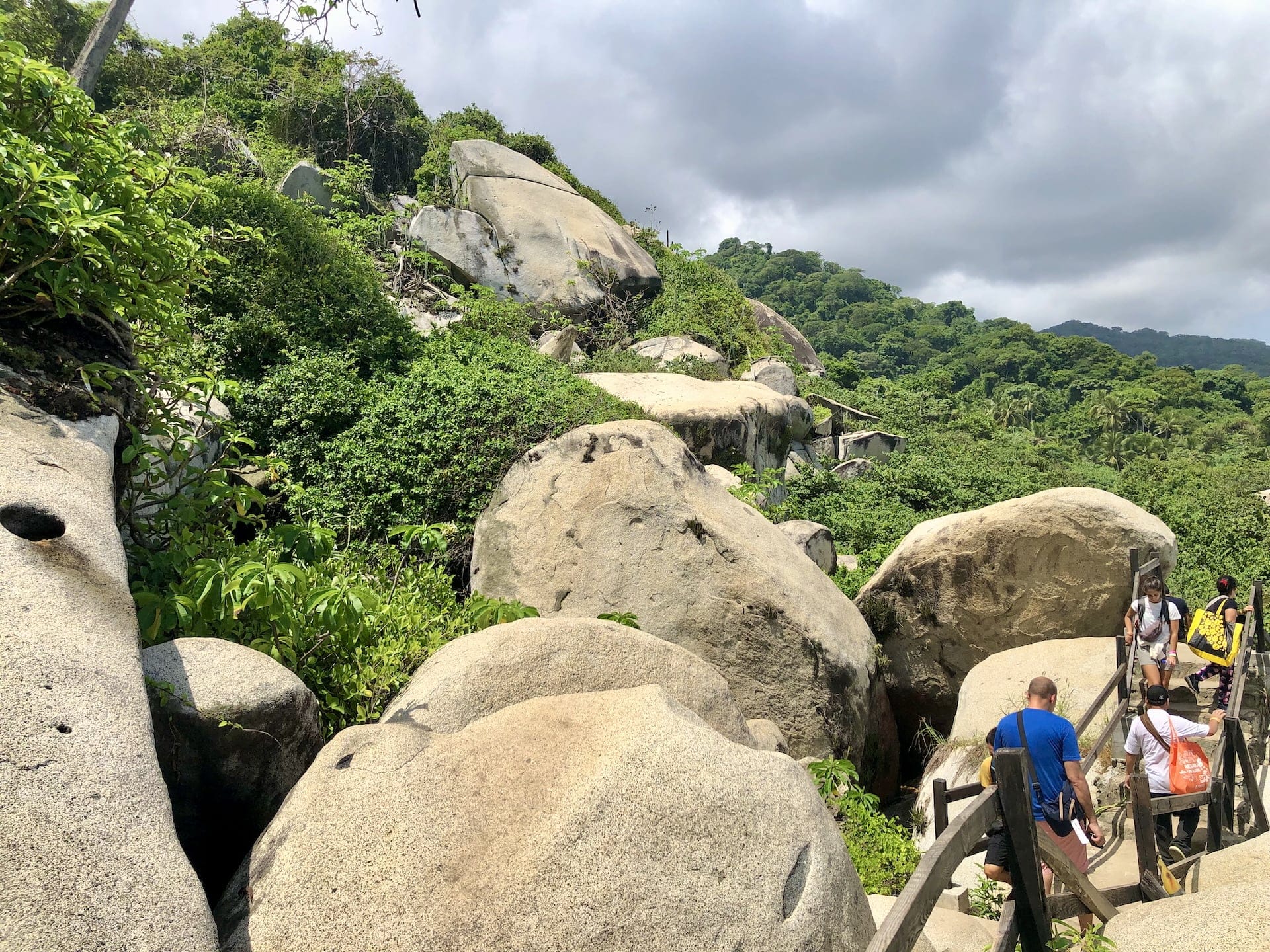
The situation has improved considerably, with more accommodation options both inside and around the park. According to the official Tayrona National Park website, Tayrona Ecohabs & Cabañas is the official accommodation provider. They offer hammocks, tents, and more comfortable cabins. Most options are located near Playa Arrecifes, with the most luxurious cabins situated near Playa Cañaveral. Online booking is available through their website (except for their hammocks). Prices start at around 200,000 COP ($50 USD) per night for a basic two-person tent, 700,000-800,000 COP ($175-200 USD) for a four-person “luxury tent,” and upwards of 1,000,000 COP (~$250 USD) for an “ecohab” cabin. As you can see, these prices are significantly higher than typical Colombian accommodations.
If you prefer not to stay near the main attractions (beaches), you have two primary options. Several budget-friendly accommodations (hotels, guesthouses, and hostels) are available just after the El Zaíno entrance. Keep in mind these are quite far from the beach area – you might need to walk up to an hour to reach the swimming spots. These accommodations can be found and booked in advance through major booking platforms (Booking.com, Airbnb, Hotels.com, etc.). They’re ideal if you want relative comfort at lower prices and plan to visit Tayrona over several days.
For a single-day park excursion, I recommend following our approach: we arrived in the afternoon and booked accommodation near the El Zaíno entrance but outside the park – a simple wooden cabin in a beautiful garden. We stayed at Posadas Ecoturisticas Seineken, costing around $25 USD per night, with optional breakfast available for a few extra dollars. Worth mentioning are the owner’s delightful talking parrots, who put up quite a rebellious show in the evening before finally agreeing to come down from the trees and go to sleep. The accommodation is less than 1 km (0.6 miles) from the El Zaíno entrance, so you don’t need to wake up extremely early to arrive at opening time. There’s also a tienda (local shop) just a few steps away where you can buy basic snacks and water. During our stay, while they didn’t have beer in stock, they eagerly ran to get some, allowing us to enjoy cold Aguilas in the hammock outside our cabin.
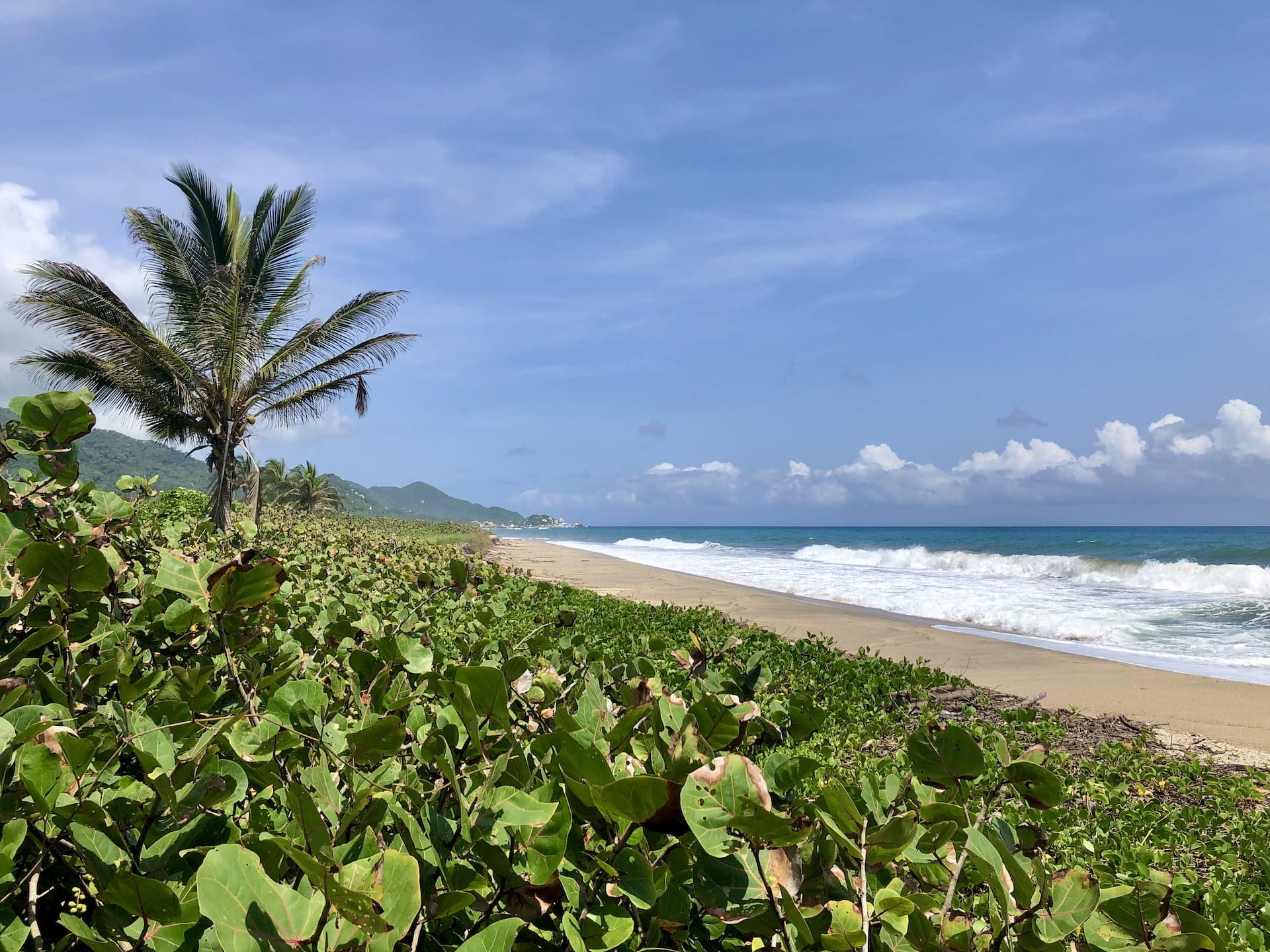
Tayrona National Park Entrance Fees & Visiting Hours (Updated 2025)
Fortunately, Tayrona National Natural Park now has a decent website with all essential information – a significant improvement from our visit. There are four entrances: Bahía Concha, Palangana, Calabazo, and El Zaíno.
We recommend focusing on the latter two. For multi-day visits with overnight stays in the park, the quieter Calabazo entrance is excellent, providing access to accommodations near Cabo San Juan del Guía and Playa Brava. For shorter visits like ours, or if you prefer more developed facilities, El Zaíno (the main entrance) is your best bet. This area is well-developed, surrounded by shops and restaurants, easily accessible from anywhere, and close to most outside-park accommodations.
Park entry requires both an entrance ticket and mandatory insurance (regardless of your existing travel insurance). Prices vary between high and low season. In 2024, high-season tickets cost 87,000 COP ($22 USD) per person, while low-season tickets are 73,500 COP ($18.5 USD), plus 10,000 COP (~$2.5 USD) for insurance. High season includes December 1 to January 31, June 1 to July 31, and various national and religious holidays. Everything else is considered low season – including our late August visit.
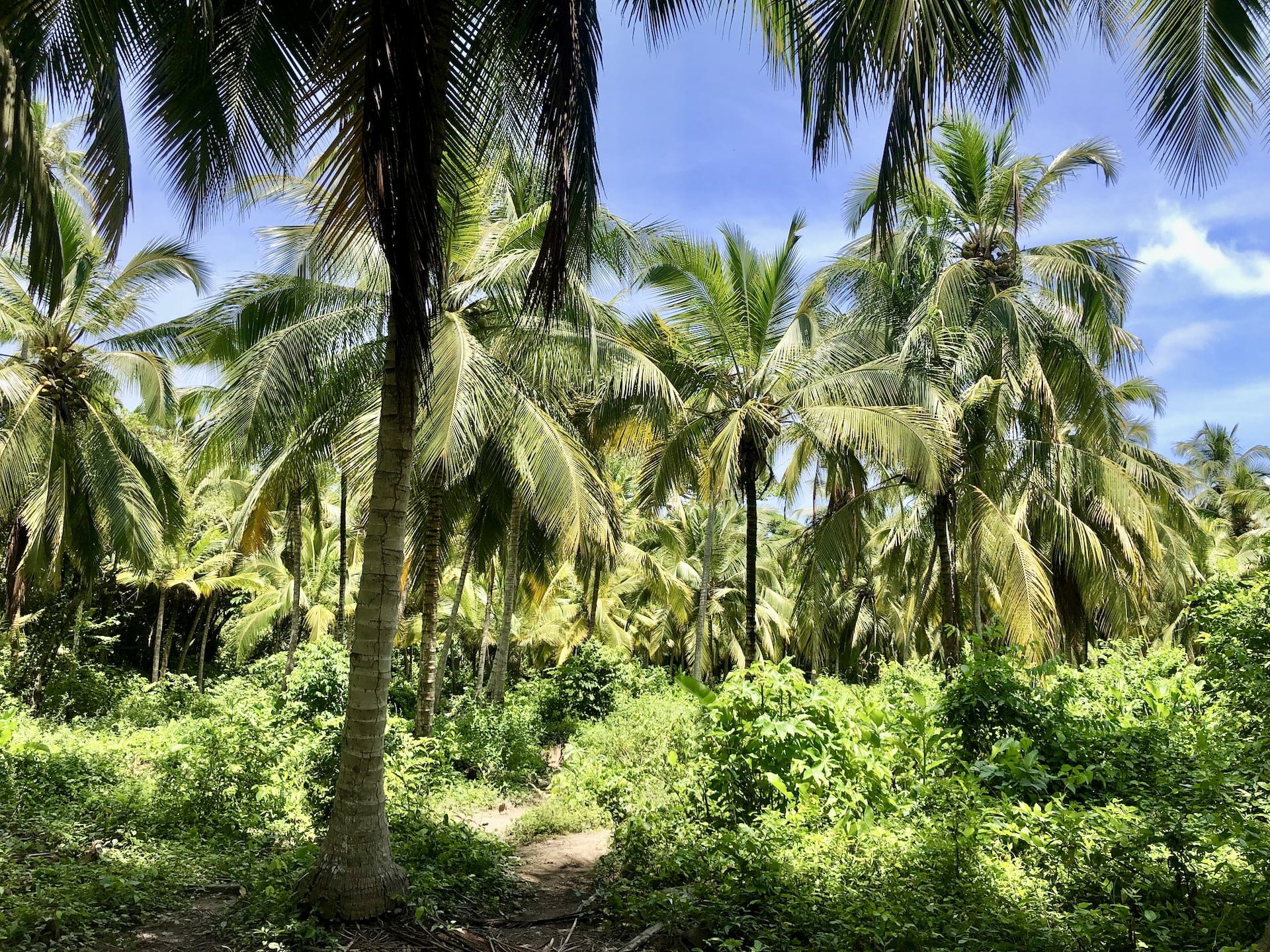
Tickets are valid for one entry but don’t limit your stay duration – you’ll pay the same whether visiting for a day or staying several nights. Tickets can’t be purchased online, and daily quotas apply. We bought our tickets the afternoon before our visit. You’ll need a passport, and technically, proof of yellow fever vaccination, though they didn’t check ours. If entering through El Zaíno, a free shuttle bus takes about 10 minutes to reach Playa Cañaveral, where the hiking trails begin.
Purchase your tickets a day in advance to avoid morning queues and maximize your time in the park. While high-season crowds can be intense, our late August visit saw manageable numbers.
Gates open between 7 and 8 AM (depending on season and entrance), and if you’re not staying overnight, you must exit by 5 PM (low season) or 6 PM (high season). For day visits, arrive before opening time to maximize your day. For El Zaíno exits, note the last free shuttle times posted at drop-off. While entrance queues can be substantial, our low-season experience was quite manageable.
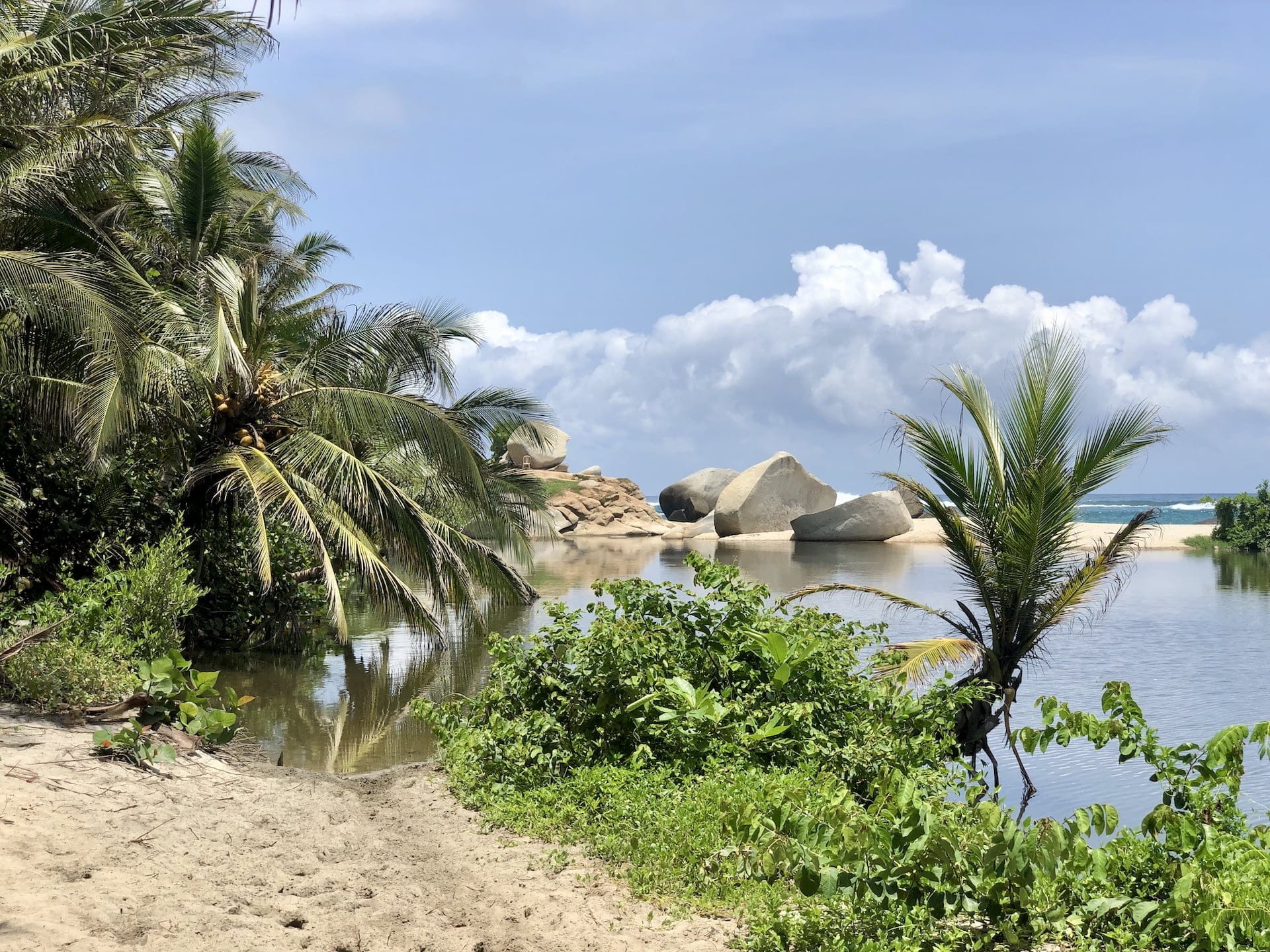
You can pay for tickets by card or cash, but ATMs are scarce in the area, and mobile signal isn’t always reliable, so carrying cash is wise. (We successfully paid by card at the ticket office at El Zaíno entrance.)
Importantly, the park closes for two weeks once or twice annually. Dates aren’t announced far in advance, but traditionally include February 1-15, and sometimes June 1-15. Avoid planning visits during these periods and check ahead for any schedule changes. These closures allow the natural environment to recover from heavy tourist traffic.
Best Hiking Trails & Beaches in Tayrona National Park: Our Experience
I’ll primarily describe our route but will also outline an ideal multi-day itinerary at the end. As mentioned, we weren’t at full strength during our visit. While I had recovered from my Minca-acquired stomach issues, Peter fell ill the night before our park visit and got virtually no sleep. (Lesson learned: despite having fancy water purification bottles, bottled water is always safest. We initially suspected the roadside chorizo near the park entrance, but since I ate it too without issues, that wasn’t the culprit.)
Consequently, we didn’t reach all our intended destinations – even with me leaving Peter resting under a palm tree at one point to explore a bit further alone. We entered through El Zaíno, took the short bus ride, and started hiking from near Playa Cañaveral. The route is clearly marked, with this initial section featuring stairs and wooden boardwalks – the main challenge here being potential crowds before they disperse along different trails.
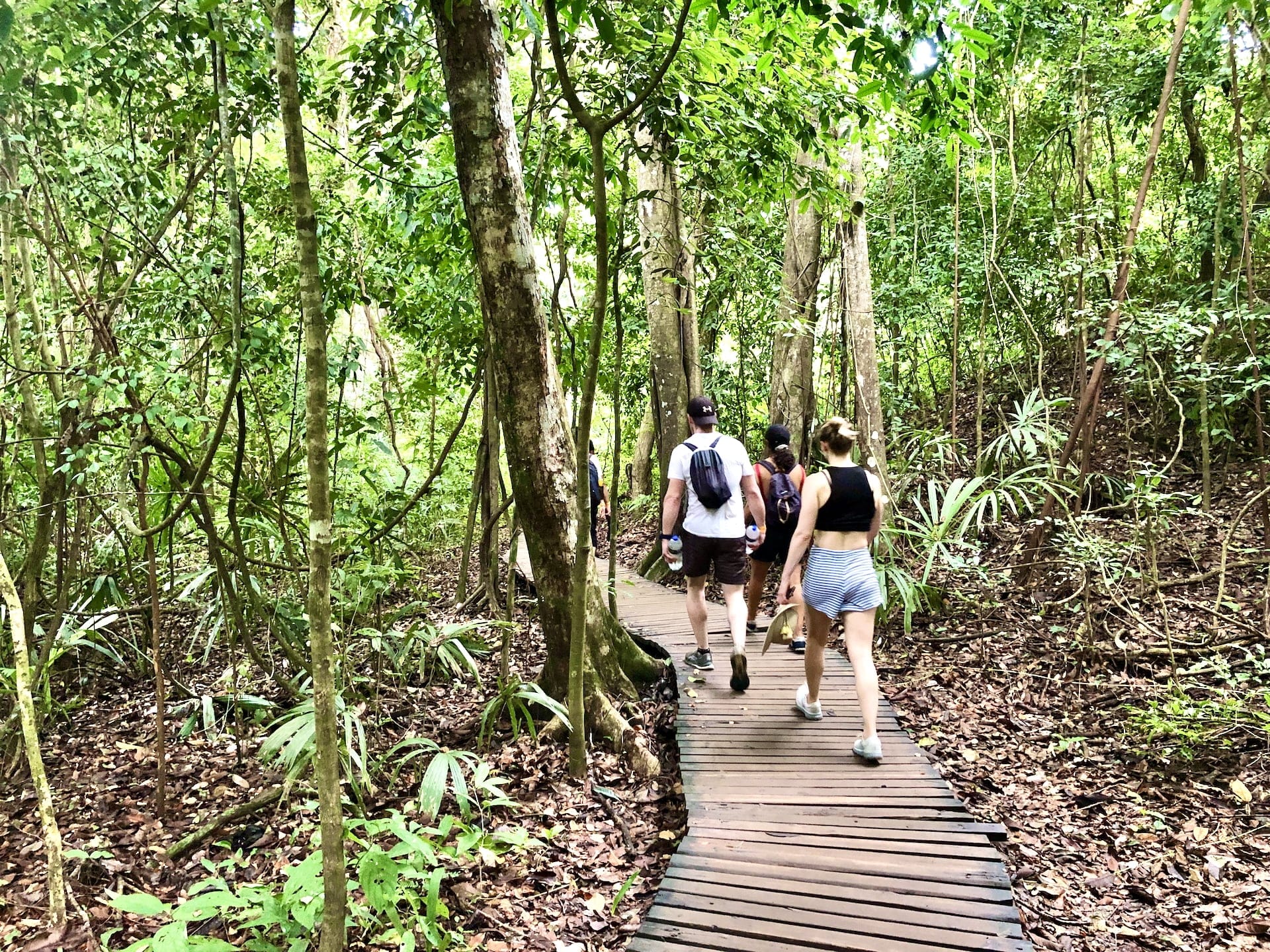
The first stop is Playa Cañaveral beach, followed by a trail to Playa Arrecife, typically an hour’s walk at normal pace – though it took us two hours with frequent rest stops. The path alternates between forest and coastline, presenting moderate difficulty but definitely requiring proper footwear. There are elevation changes and small rocks and hills to climb. Along the way, several stunning viewpoints offer spectacular views of the Caribbean Sea, palm trees, and massive smooth boulders.
Past Playa Arrecifes, you’ll reach Playa Arenilla (Peter’s endpoint), followed by a magnificent palm forest leading to La Piscina beach (my turnaround point) about 20-30 minutes further. But don’t stop where we did! Another 30-45 minutes brings you to one of Tayrona’s main attractions and most popular beaches, Cabo San Juan del Guía. For day trips, this makes an ideal destination (but monitor your time to ensure you catch the return shuttle).
Throughout your hike, you’ll pass numerous stunning beach sections. Always check the flag warnings: red flags indicate dangerous currents and waves – absolutely no swimming. However, you’ll find plenty of safe spots to enjoy the warm, crystal-clear Caribbean waters. This essentially captures the Tayrona experience: exploring incredible nature while taking refreshing dips in the beautiful sea.
The national park hosts diverse wildlife. You’re almost guaranteed to see monkeys, various insects (this is home to the scolopendra gigantea, though fortunately we didn’t encounter any), crabs, and colorful rare birds. Jaguars inhabit the park but avoid human contact, and if you’re lucky, you might spot a sloth.
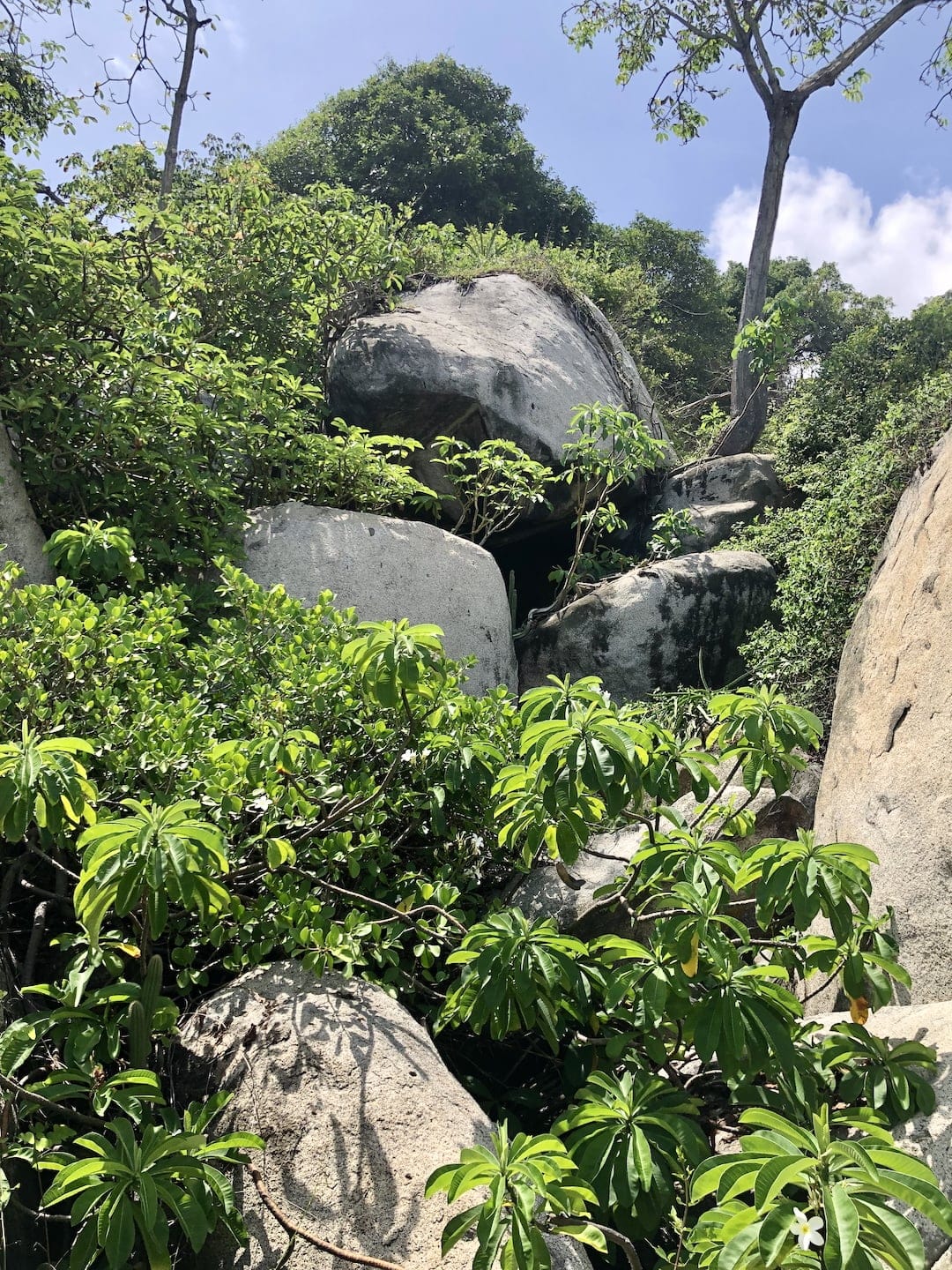
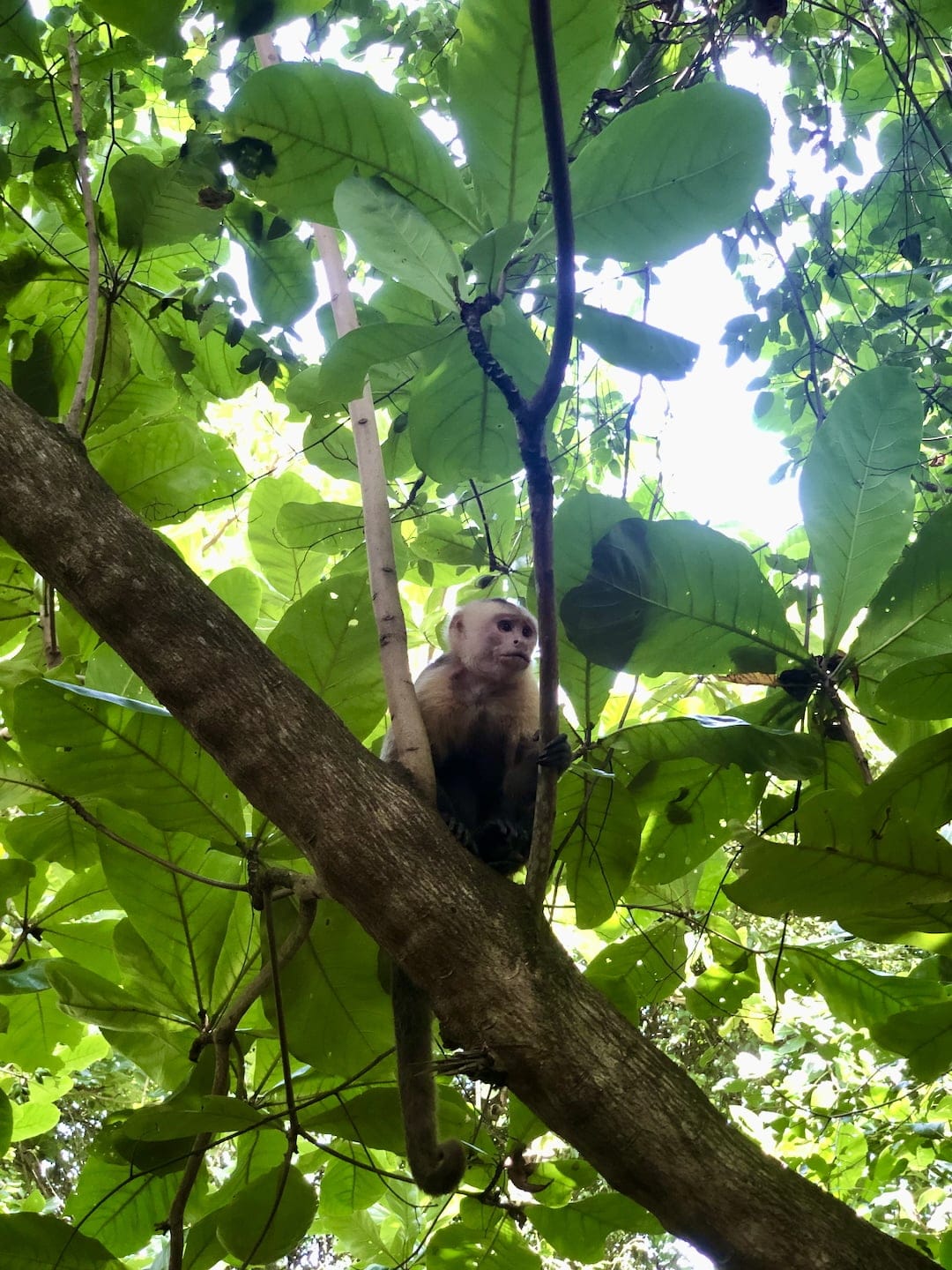
Along the trails, you’ll find small stands and vendors selling water, drinks, coconuts, and fruits (recognize local indigenous sellers by their traditional dress), plus restaurants near popular beaches serving hot meals. Be prepared for higher prices than in cities, and remember you’re in a remote location where card payments aren’t accepted.
For overnight stays, consider entering through Calabazo, hiking to either Playa Brava or Playa Cabo San Juan via the indigenous Pueblito village, relaxing overnight, then exiting via El Zaíno through the La Piscina-Arrecifa-Cañaveral route. For two nights, sleep near Playa Brava first, then Cabo San Juan del Guía. Staying overnight means experiencing the park with smaller crowds during mornings and late afternoons, plus more time to relax and immerse yourself in nature.
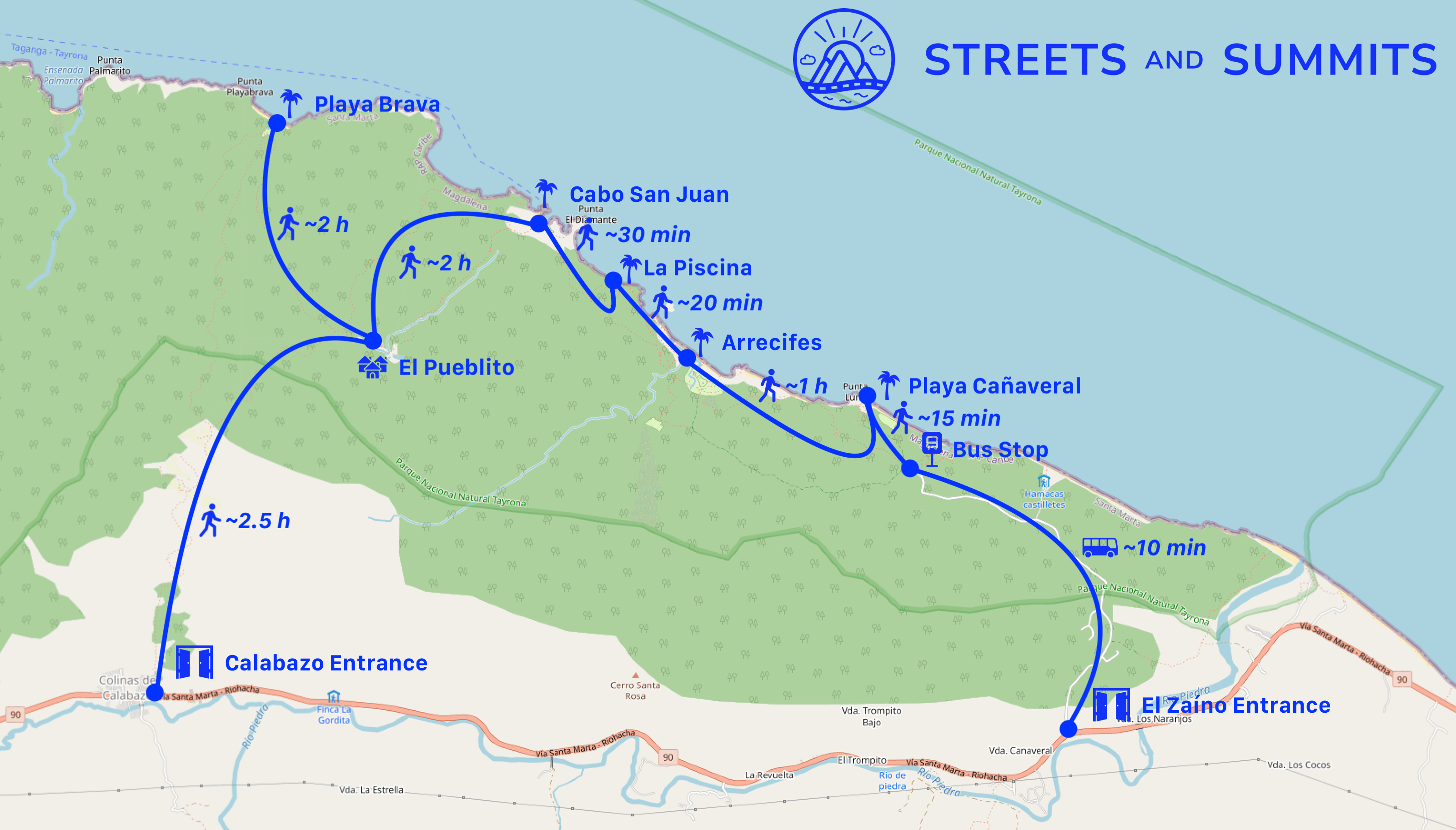
Essential Travel Information
Weather & Best Time to Visit
The park’s tropical climate means warm, humid conditions year-round. Daytime temperatures typically exceed 30°C (86°F), dropping to 20-22°C (68-72°F) at night – relevant if you’re sleeping in hammocks. Humidity almost never falls below 85%, which, combined with the heat, can be challenging, especially while hiking.
The year alternates between dry and rainy seasons. January through March and June-July see relatively little rain; April-May and August-December are transitional periods; September through November brings high rainfall probability. We visited in late August – conditions were hot and humid, and while it didn’t rain during our visit, previous rains had left muddy, waterlogged trails in places.
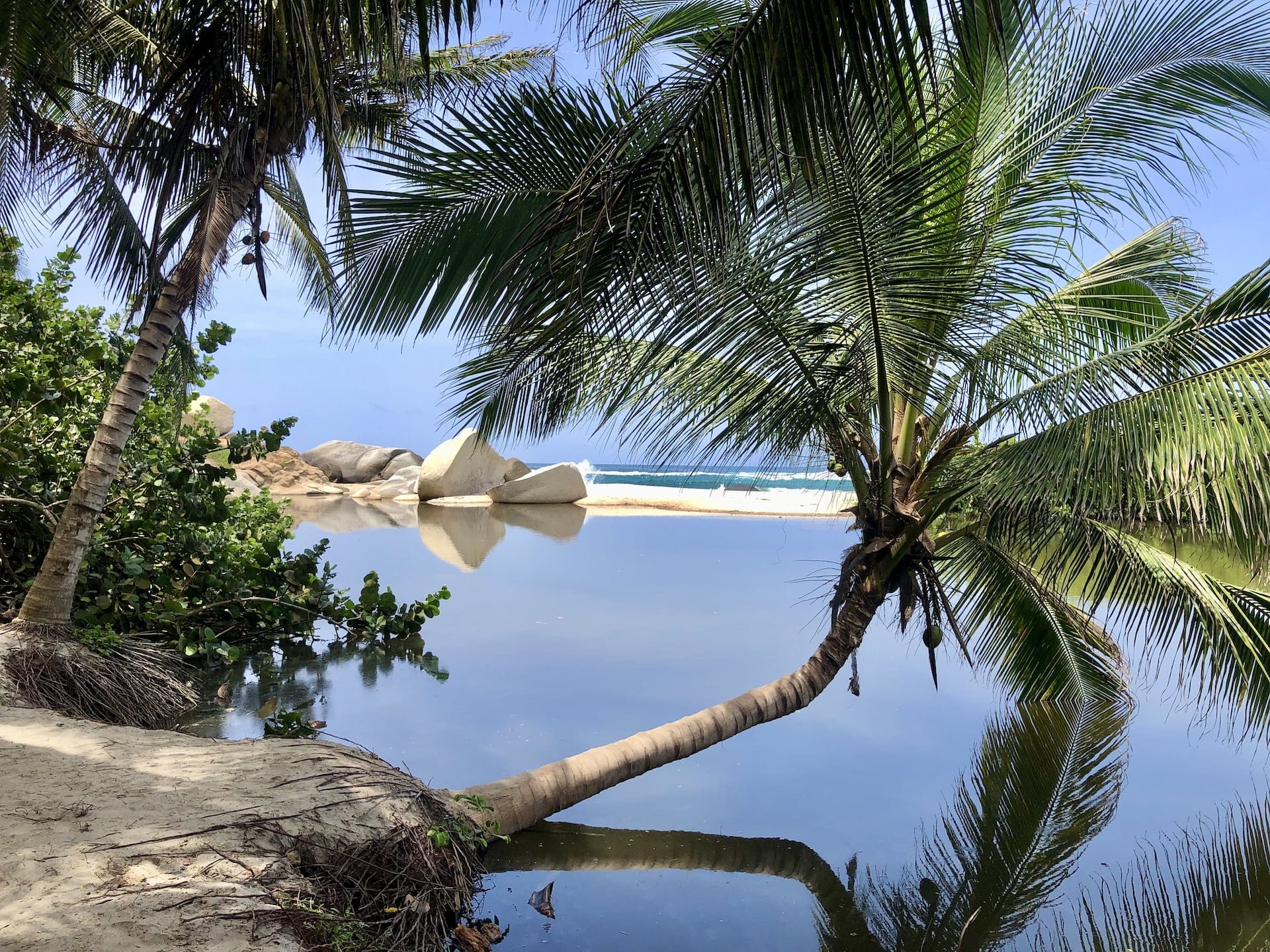
Tayrona Packing List: What to Bring (And What to Leave Behind)
Even for multiple days, avoid bringing your full backpack – arrange to store it at your Santa Marta accommodation. For day trips with overnight stays near the park, most accommodations will watch your larger items (our solution), though some lockers are available at El Zaíno entrance.
Essential items:
- Comfortable, breathable hiking shoes (avoid heavy boots!)
- Spare dry socks
- Sun hat or cap
- Sunglasses
- Sunscreen
- Insect repellent
- Hand sanitizer
- Water (about 2 liters/0.5 gallons, more can be purchased inside)
- Light snacks (while food inside is expensive, don’t bring too much – it won’t survive the heat)
- Swimwear and light towel
- Packable rain jacket/poncho
- Cash
Additional items for overnight stays (especially in hammocks):
- Flashlight/headlamp
- Small padlock for lockers
- Light fleece for cooler evenings (or use your towel as extra cover)
- Toilet paper
- Basic toiletries
- Spare underwear (and dry socks!)
- Change of clothes (or use merino wool clothing)
- High-capacity power bank
- Note: Mosquito nets are provided with hammocks
Consider bringing a small first aid kit with basic medications for stomach issues, as the combination of heat, humidity, and different food can sometimes cause digestive problems.
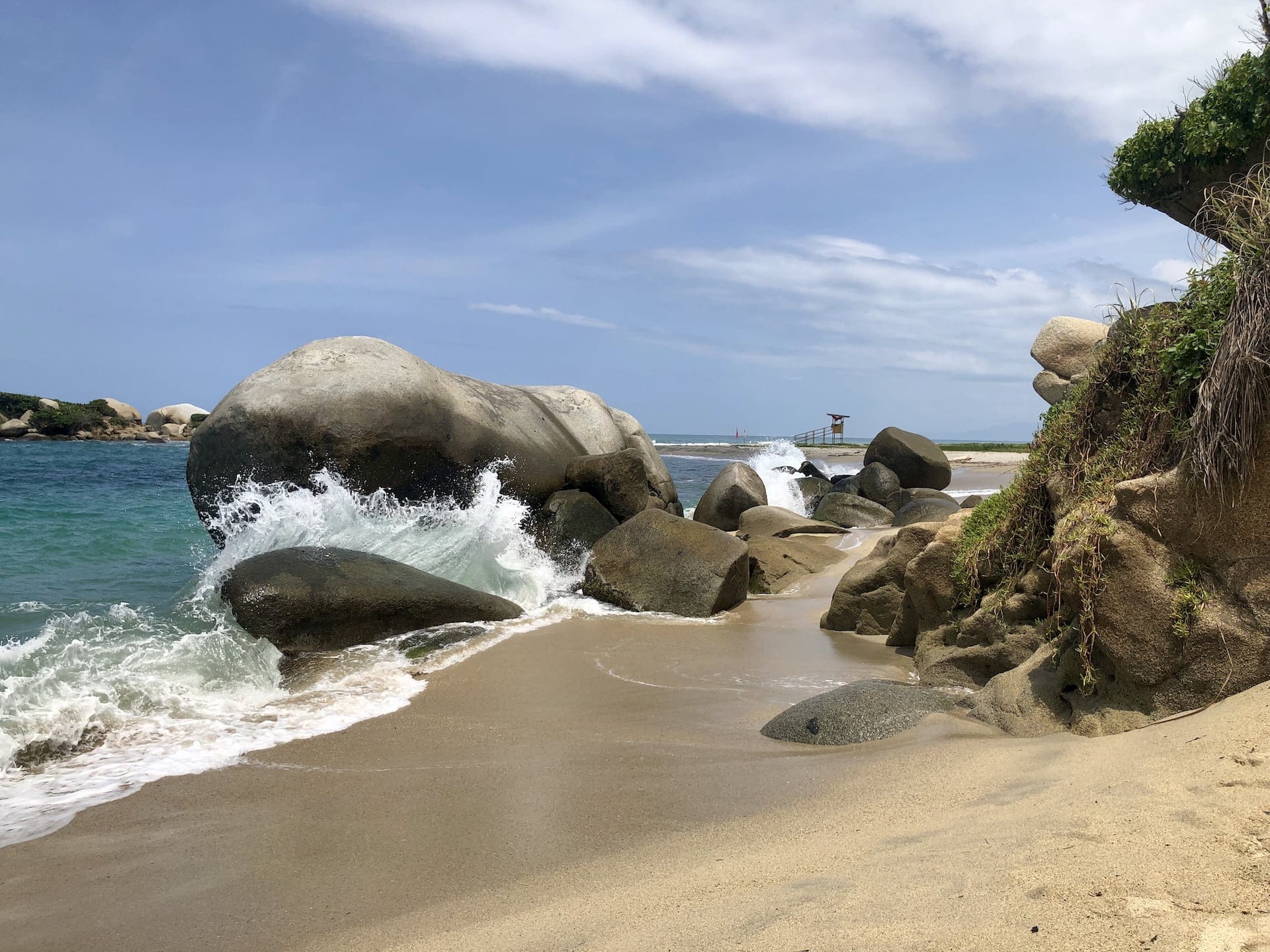
Summary: Is Tayrona National Park Worth Visiting?
Despite our brief visit and less-than-ideal circumstances (thanks to that ill-timed food poisoning!), Tayrona National Park absolutely lived up to its reputation. Even with just a day to explore, we experienced enough to understand why it’s considered one of Colombia’s crown jewels. The stunning combination of pristine Caribbean beaches, lush rainforest, and dramatic coastal landscapes creates an unforgettable setting that’s truly unique – however it is worth taking into account that there is often a really big crowd.
Who should visit Tayrona?
- Nature lovers who enjoy hiking
- Beach enthusiasts seeking more than just standard resort experiences
- Photography enthusiasts
- Wildlife watchers
- Anyone interested in experiencing one of Colombia’s most iconic destinations
Best suited for:
- Physically active travelers (the trails require moderate fitness)
- Those comfortable with basic facilities and tropical conditions
- Visitors who don’t mind paying a bit more for a unique experience
Consider alternatives if:
- You have mobility issues (trails can be challenging)
- You’re traveling on an ultra-tight budget
- You’re looking for luxury amenities
- You’re visiting during rainy season or park closure periods
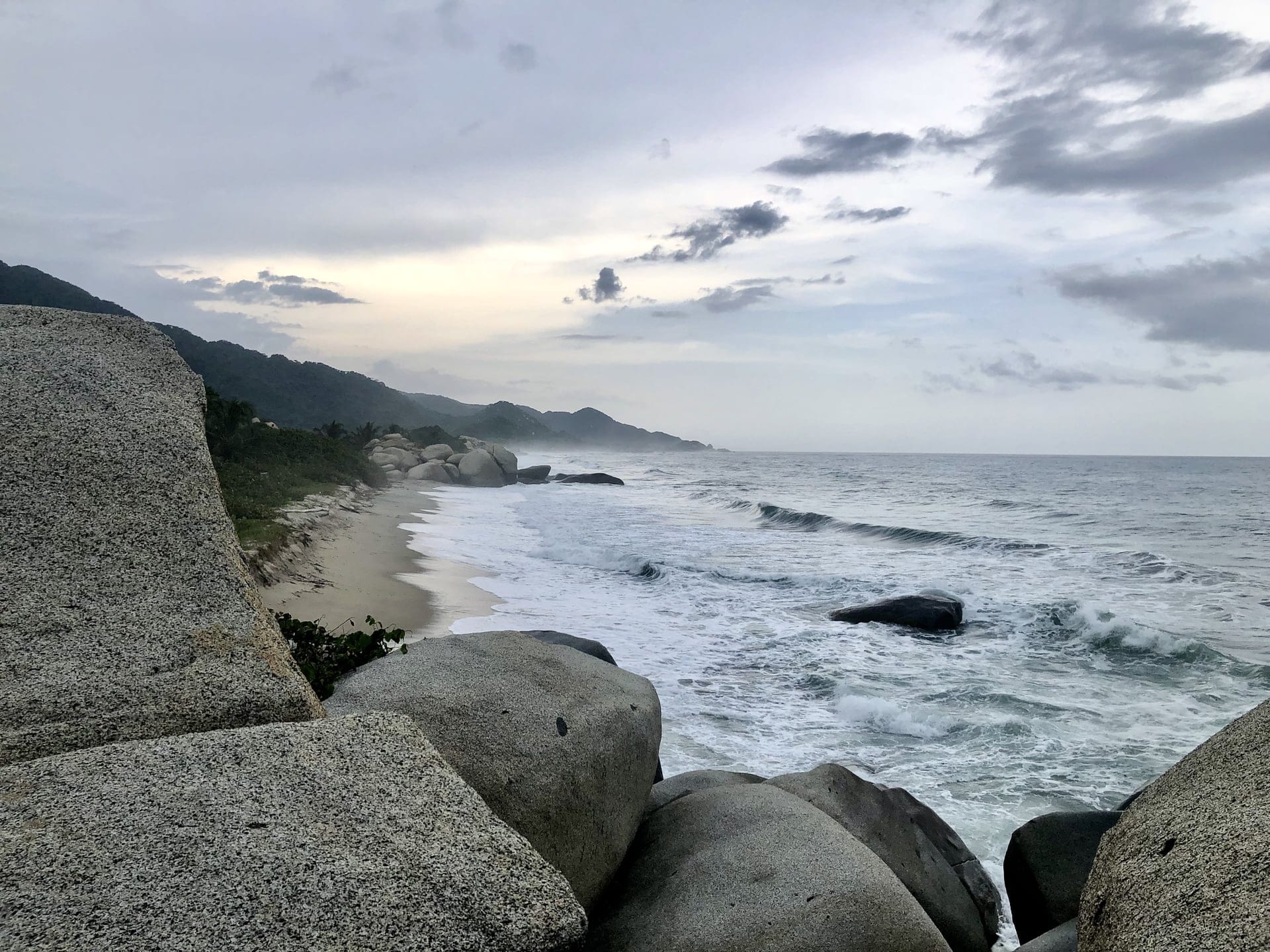
Our key takeaways:
- One day is enough to get a taste, but 2-3 days would be ideal
- Book accommodation in advance during high season
- Start early to maximize your time and beat the crowds
- Bring enough cash and water
- Don’t underestimate the humidity and sun exposure
While our visit was shorter than the “recommended” stay, we still found it thoroughly worthwhile. The park offers something special whether you’re doing a quick visit like us or planning a multi-day adventure. Just remember to check the seasonal closure dates, bring appropriate gear, and prepare for the tropical conditions.
Looking back, would we do anything differently? Absolutely – we’d plan for at least two days and make sure to reach Cabo San Juan beach. But even with our condensed timeline and minor setbacks, Tayrona proved to be a highlight of our Colombian journey. Whether you choose a day trip or a longer stay, this magnificent park deserves a spot on your Colombia itinerary.
Even if you can only manage a day trip like we did, don’t skip Tayrona. Just be strategic with your time, start early, and focus on the sections that interest you most. Sometimes a taste of paradise is better than no paradise at all!
